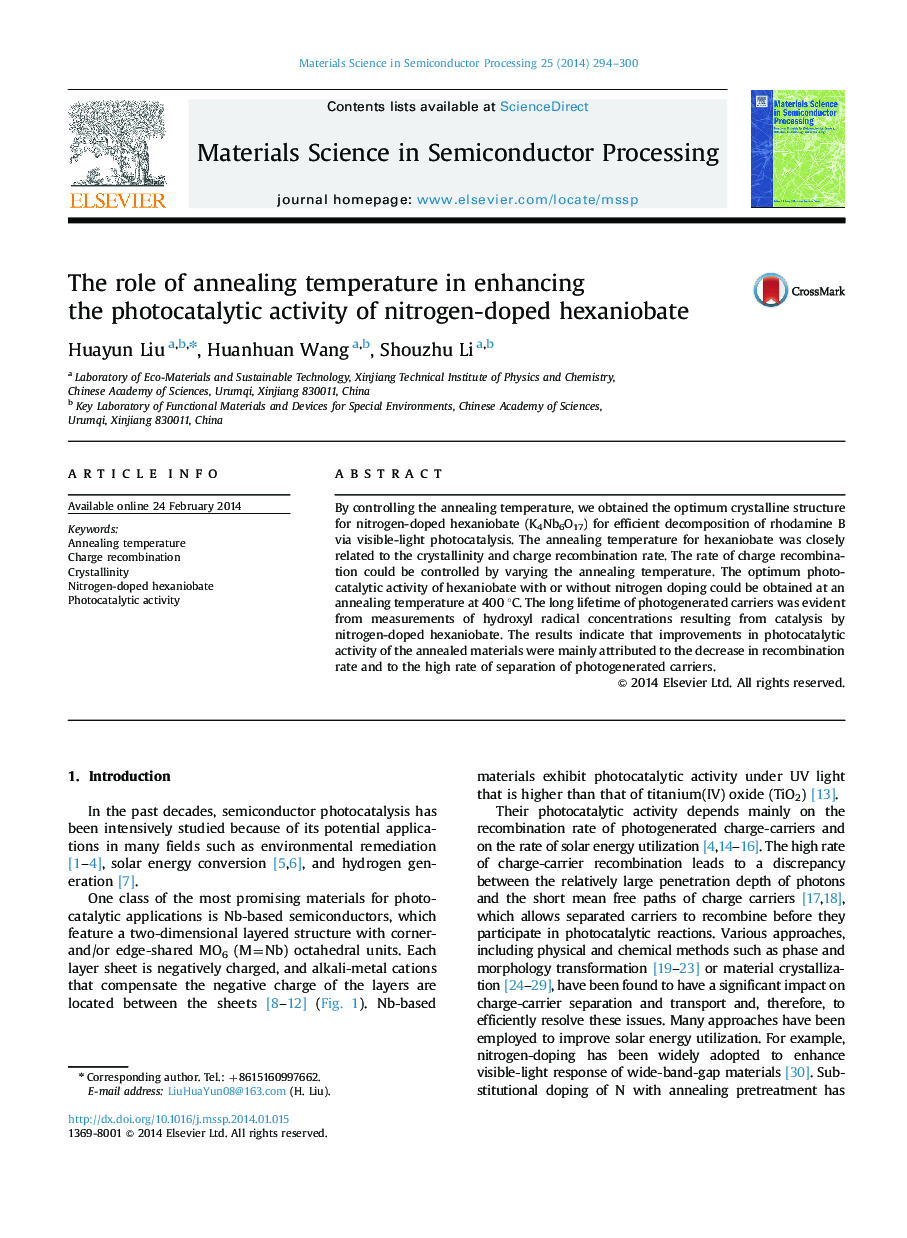| Article ID | Journal | Published Year | Pages | File Type |
|---|---|---|---|---|
| 728559 | Materials Science in Semiconductor Processing | 2014 | 7 Pages |
By controlling the annealing temperature, we obtained the optimum crystalline structure for nitrogen-doped hexaniobate (K4Nb6O17) for efficient decomposition of rhodamine B via visible-light photocatalysis. The annealing temperature for hexaniobate was closely related to the crystallinity and charge recombination rate. The rate of charge recombination could be controlled by varying the annealing temperature. The optimum photocatalytic activity of hexaniobate with or without nitrogen doping could be obtained at an annealing temperature at 400 °C. The long lifetime of photogenerated carriers was evident from measurements of hydroxyl radical concentrations resulting from catalysis by nitrogen-doped hexaniobate. The results indicate that improvements in photocatalytic activity of the annealed materials were mainly attributed to the decrease in recombination rate and to the high rate of separation of photogenerated carriers.
